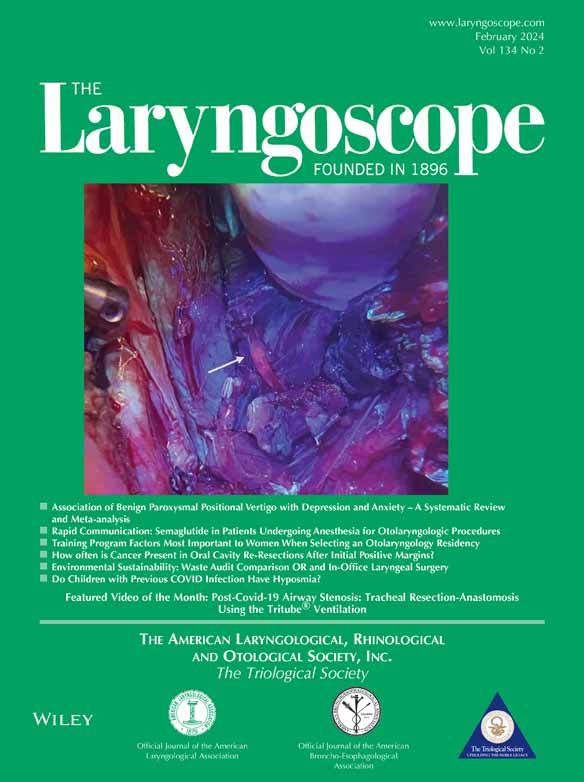Method for Collecting Single Epithelial Cells from the Mouse Larynx
This work was presented at the American Laryngological Association's 2023 Annual Meeting at COSM in Boston, Massachusetts.
This study was supported by the National Institutes of Health, National Institute of Deafness and Other Communication Disorders (R21 DC016126 and R01 DC020176). The authors have no conflicts of interest to disclose.
Abstract
Objective
The larynx is lined by specialized epithelial cell populations. Studying molecular changes occurring in individual epithelial cell types requires a reliable method for removing these cells from the larynx. Our objective was to develop a method to harvest individual epithelial cells from the mouse larynx while minimizing contamination from non-laryngeal sites and non-epithelial laryngeal cells.
Methods
Mice were euthanized, and the larynx was carefully exposed and separated from non-laryngeal sites. A small dental brush was inserted into the laryngeal inlet and rotated to obtain epithelial cells. Cells were transferred to collection media, counted, and cytospin preparations stained for laryngeal epithelial (i.e., Pan-Keratin, EpCAM, NGFR, p63, K5, β-tubulin, MUC5AC) and non-epithelial (i.e., vimentin) cell markers. Histopathology was completed on brushed laryngeal tissue sections to evaluate the depth of cell collection. Preliminary Single-cell RNA sequencing (scRNA-seq) was performed to confirm this method can capture diverse laryngeal cell types.
Results
We collected 6000–8000 cells from a single larynx and 35000–40000 cells from combining brushings from three tissues. Histopathology demonstrated brushing removed the epithelial layer of the larynx and some underlying tissue. Immunofluorescence staining demonstrated the phenotype of harvested cells was primarily epithelial. Preliminary scRNA-seq was successfully conducted and displayed nine unique cell clusters.
Conclusion
We developed a reliable method of harvesting individual epithelial cells from the mouse larynx. This method will be useful for collection of laryngeal cells for a variety of downstream cellular and molecular assays, including scRNA-seq, protein analyses, and cell-culture-based experiments, following laryngeal injury.
Level of Evidence
NA Laryngoscope, 134:786–794, 2024




